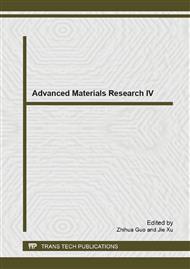p.70
p.77
p.82
p.87
p.95
p.104
p.110
p.116
p.121
Wear Monitoring on Microcrystalline Aluminum Oxide Grinding Wheels on Profile Grinding with the Aid of Acoustic Emission
Abstract:
The localized wear on grinding wheel edges is a common phenomenon on profile grinding since the abrasive grains are less attached to the bond. The grinding wheel wear depends heavily on the process parameters, workpiece and wheel composition, causing changes on the process and profile deviation behaviors. In order to cope with these uncertainties, many natural and synthetic materials have been used in different grinding processes. However, the influence of mixed compositions of different types of abrasive grains on external cylindrical grinding is not well known. In order to assess this relation, a methodology procedure was developed providing an overview of the cinematic edges behavior on a progressive wheel wear. The methodology procedure is based on the acoustic emission technology, using a transducer with a 50 μm radius diamond tip. The tip, when in contact with a rotating grinding wheel, enables the evaluation of the cinematic cutting edges. The abrasive grain density was evaluated for different grinding wheel compositions and specific wear removal values. Furthermore, these results were compared to the profile deviation observed on the same tool, allowing the assessment of the influence of different microcrystalline corundum grains on the overall grinding wheel wear behavior.
Info:
Periodical:
Pages:
95-103
Citation:
Online since:
February 2014
Price:
Сopyright:
© 2014 Trans Tech Publications Ltd. All Rights Reserved
Share:
Citation:


